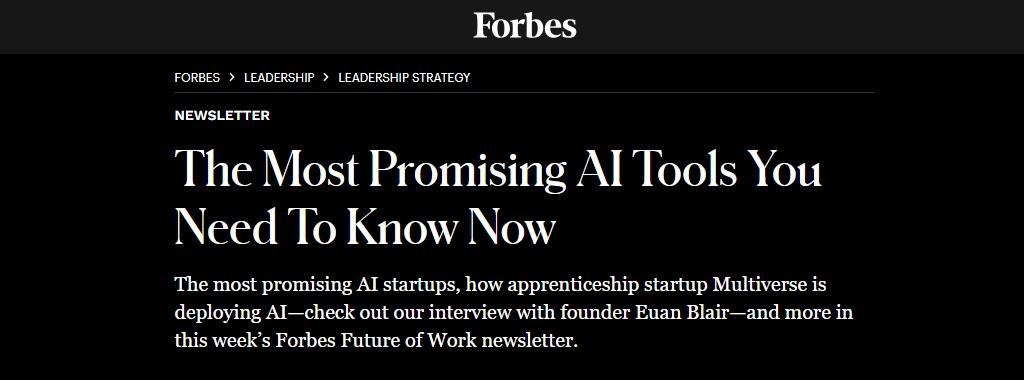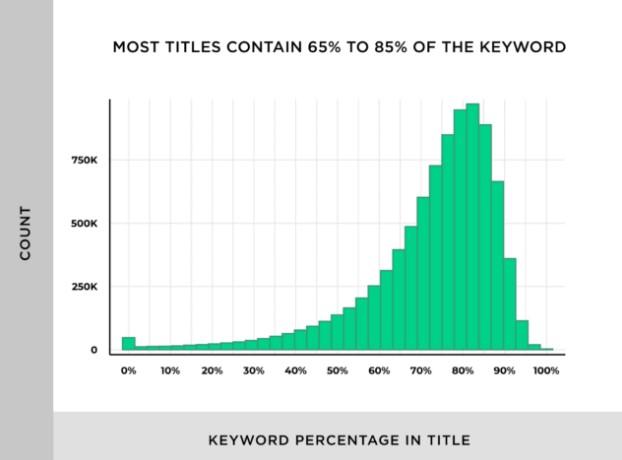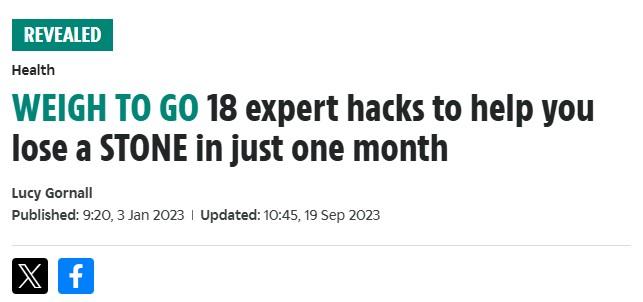How To Create Clickbait Blog Post Titles in 60 Seconds (+ Real Examples)
Daniel Trick
Oct 29, 2024
6 min read
Your blog post title is the most important part of your online content.
Without an attention-grabbing headline, even the best content won’t be read.
So, how do you craft titles that make people need to click?
The answer is clickbait.
We’re not talking about misleading, spammy titles. We’re talking about clickbait done right – titles that entice and deliver.
In this guide, we’ll show you how to craft irresistible clickbait blog post titles. We’ve also included some real-life clickbait examples you can use for inspiration.
We’ll cover:
- Why blog titles matter
- Five clickbait tactics that work + real examples
- How to optimize clickbait titles for SEO
- Where to find clickbait title inspiration
Why Blog Post Titles Matter
Here’s the deal:
Your blog post title is the gateway to traffic and engagement.
Think of it like the hook you cast on the SERPs to reel readers into your content. If your title doesn’t grab attention, your post won’t get the clicks it deserves.
Clickbait titles are designed to maximize engagement. They spark curiosity or emotion to create an irresistible urge to click.
And when done right, a clickbait headline drives traffic without annoying your audience.
5 Clickbait Title Formats That Drive Clicks
Here are five proven ways to use clickbait headlines effectively in your content marketing:
1. List Titles
List titles are one of the most reliable formats for driving clicks.
Why?
People love lists because they break down information into bite-sized, easily digestible chunks.
They set clear expectations. Right from the headline, readers know exactly what they’ll get.
This catchy title by Reader’s Digest is a perfect example of a list title in action:

Here’s why it works so well:
Clear value: The number “105” promises readers a wide variety of ideas.
Specificity: Words like “last-minute” and “easy” target a clear audience – people short on time who need quick, actionable solutions.
Skimmable: The title tells readers they’ll get a list they can quickly browse without sifting through blocks of text.
This title ticks all the boxes for an effective, clickable headline. It offers clear value while addressing a common pain point.
2. “How To” Titles
“How To” titles offer a direct solution to a problem or promise to teach something actionable. They’re all about delivering value upfront.
This Backlinko headline is a great example:

Why does this headline work so well?
Clear problem-solving: It promises a solution to a common SEO challenge – low traffic.
Personal experience: “How I Increased” signals that the post shares proven steps readers can follow to replicate the success.
Specific result: Using “110%” adds credibility. It’s a measurable outcome that makes the solution feel realistic.
Urgency: The phrase “in 7 days” makes the result feel fast and achievable. It appeals to readers looking for quick SEO wins.
This type of title is effective because it offers a roadmap to achieve a goal. Readers know exactly what they’ll learn.
3. Curiosity Titles
Curiosity-driven titles tap into the reader’s natural desire to “fill in the blanks.”
When people sense they’re missing out on valuable or surprising information, it creates a curiosity gap that compels them to click.
Here’s an example from BuzzFeed:

Here’s why it works:
Creates intrigue: The phrase “I’m ashamed of myself” immediately grabs attention. It sparks an emotional response.
Curiosity gap: The headline withholds key details. It forces you to click to satisfy your curiosity. And by mentioning “18 adults,” it promises a variety of stories.
Exclusivity: Words like “ashamed” and “couldn’t believe they were capable of making” suggest revelations that most people wouldn’t openly share. It has shock value that makes the reader feel like they’re gaining exclusive access to something.
Curiosity titles work.
But they can backfire if the actual content doesn’t deliver. Overhyped headlines that use sensationalized language can feel spammy and hurt your credibility.
Make sure you provide real value and satisfy the reader’s curiosity in your blog post.
4. Fear of Missing Out (FOMO) Titles
FOMO titles create urgency. They make readers feel they might miss something if they don’t click and read the content.
These titles can be super effective for competitive audiences who want to stay ahead.
Here’s a great example by Forbes:

Here’s why it works:
Urgency: The word “Now” signals that the information is timely. This is something that readers need to know about immediately.
Competitive edge: “The Most Promising AI Tools” suggests that knowing these tools can give the reader a competitive advantage.
Exclusive insights: The phrase “You Need To Know” implies the information is important and not yet widely known. It makes it sound like you are getting exclusive insider knowledge.
5. Controversial Or Opinionated Titles
Controversial or opinionated titles challenge the norm. They make bold claims that force readers to either agree or disagree.
And that sparks curiosity.
People click to find out whether you can back up your claim with a solid argument in the rest of your content.
Here’s an example from Entrepreneur:

Why it works:
Provokes strong reactions: The title suggests failure is “crucial” to success. That’s an idea that many people might initially reject. It creates an emotional response that encourages people to click and find out more.
Challenges the status quo: Most people want to avoid failure at all costs. This title flips that. It presents failure as a key to success and encourages readers to challenge their assumptions.
Sharability: People are more likely to share content that sparks a strong reaction or aligns with their beliefs. Taking a stance encourages readers who agree or disagree with you to share your content.
How to Optimize Clickbait Headlines for SEO
Clickbait titles need to be seen in the SERPs before they can attract clicks. Here’s how to optimize your clickbait titles for SEO:
Use Target Keywords
Including your main keyword in the title is essential for SEO.
Search engines rely on keywords to understand your content’s topic and rank it for relevant queries.
A recent Backlinko study found that most titles on page one of search results contain 65% to 85% of the keyword:

For example, a title like “10 Link Building Strategies for 2024” features the keyword “link building strategies.”
It makes the content clear to Google and users.
This can boost your visibility in search results and make your titles more clickable. People are more likely to click when they know your content addresses their specific needs.
“I’m so tired of using the word best in blog titles. What can I use instead”-Someone in an fb group today
The answers shocked me.
Everyone kept throwing in fancy synonyms.No one is searching “quintessential hotels”
— Nina Clapperton (She Knows SEO) (@NinaClapperton) June 6, 2023
Reflect Search Intent
Your title needs to match the user’s search intent to rank and get clicks.
Search intent is the reason behind a search query.
If a user searches for “how to increase blog traffic,” a title like “How to Boost Blog Traffic in 7 Days: Fast and Effective Strategies” is likely to attract a click.
It directly addresses their need for actionable advice. The title promises exactly what the user is looking for.
A title like “How to Increase Blog Traffic: A Deep Dive into Analytics” isn’t as likely to attract clicks.
The article might contain some valuable insights, but it doesn’t offer the actionable strategies the user expects.
You can learn more about optimizing for search intent in our explainer guide.
Be Specific
Specific titles are more credible and clickable. That specificity could be numbers, timeframes, or clear outcomes.
You could even combine all three, like this example from The Sun:

First, the title promises a clear, measurable outcome – “losing a stone.” This suggests readers can achieve the same result by following the advice in the content.
Next, it uses eye-catching numbers. The phrase “18 expert hacks” immediately draws attention and makes the title more compelling.
Finally, the phrase “in just one month” provides a clear timeframe. This makes the goal feel more achievable.
Where to Find Clickbait Title Inspiration
Need help coming up with clickbait titles? Use these tools and resources:
fatjoe Blog Title Generator
Our blog post title generator can provide dozens of clickbait-worthy title ideas in seconds. Enter your topic or keyword, and you’ll get a list of ready-to-use blog post titles.
BuzzSumo
BuzzSumo allows you to analyze top-performing headlines in your industry. It’s a valuable tool for discovering the types of titles generating the most engagement in your niche.
You can see what’s trending and proven to work.
Reddit is a goldmine for trending topics and title inspiration.
Spend some time browsing popular subreddits related to your industry.
You can discover what your audience is interested in, what questions they’re asking, and what type of content is gaining traction on social media.
It’s a great way to find hot topics and trends you can leverage in your blog post titles.
Want to learn more about using Reddit to boost your SEO? Check out our Reddit SEO guide for actionable strategies to maximize your reach on the platform and in the SERPs.
Get More Traffic with Clickbait Headlines
Crafting the perfect clickbait title doesn’t have to take hours.
You can create attention-grabbing headlines in under 60 seconds using these proven formats and best practices.
Get your headlines right, and the clicks will follow.
Become a Pro at SEO
Join 65,000 others and learn the secrets to SEO success with our weekly blog posts.
